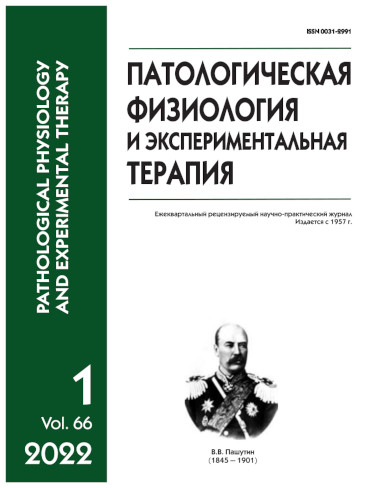The dynamics of morphological changes in liver tissue during irreversible electroporation with electrical fields of increasing strength
Abstract
Introduction. Irreversible electroporation is a new technique for tissue ablation used in the treatment of unresectable cancer. The non-thermal mechanism of cell death occurs mainly through apoptosis rather than necrosis as induced by thermal ablation. A number of reports have described the development of apoptotic cell death in irreversible electroporation but the dynamics of this effect remains poorly understood. The aim of this study was to compare morphological changes in liver tissue and blood vessels exposed to irreversible electroporation with the electrical field of increasing strength and to determine the minimum threshold electric field strength that causes formation of a zone of irreversible nonthermal electroporation through apoptosis at an equal distance between the electrodes. Methods. 7 series of experiments were performed on 140 white outbred male rats aged 6-8 months and weighing 240-330 g. An electrode consisting of 2 working needles was used for the experiments. Animals were decapitated on days 1, 2, 3, 7, and 14. In series 1-7, the electrical field strength was sequentially increased from 400 to 1000 V/cm with a step of 100 V/cm. With unchanged parameters, the duration of the pulse train was 0.5 sec, the number of pulses in the train was 8, the number of pulse trains was 225/min, the pulse type was rectangular bipolar, the duration of each pulse was 8 μs, and the maximum pulse current was 7 amps. The following morphological changes were assessed: fragmentation of cell nuclei, hyperbasophilia of nuclei, intussusception of cytoplasm, cell swelling, presence of apoptotic bodies, cell compression, phagocytosis of apoptotic cells, demarcation zone, ablation zone, lympho-leukocytic infiltration, expansion of sinusoids with venous congestion (+ dilatation; + + severely expanded), thrombosis, hemorrhages (+ focal; ++ confluent), fatty degeneration of hepatocytes, protein degeneration of hepatocytes, discomplexation of hepatic cords, and coagulation necrosis. Results. During the procedure of irreversible electroporation with an electric field strength from 400 to 1000 V/cm with a step of 100 V/cm, histopathological signs of coagulation necrosis increased from minimal at a strength of 400-600 V/cm to initial at 700 V/cm and to gross manifestations in the so-called «white zone» at 1000 V/cm. With an increase in the intensity to more than 900 V/cm, predominance of necrotic changes over apoptotic changes was observed in the interelectrode space. At a low electric field strength of 400700 V/cm, aggregations of intact viable cells without signs of damage were detected in a number of representative samples. Conclusion. This study of irreversible electroporation revealed the presence of changes caused by tissue thermal necrosis in the area of electrode location. Morphological signs of cell death through apoptosis were observed in all groups; however, the changes were composite with the contribution of coagulation changes increasing with the increase in the electric field strength. The minimum effective strength of the electric field, which is sufficient to induce apoptotic changes in hepatic cells throughout the entire distance between the electrodes, corresponds to 900 V/cm, when the processes of thermal coagulation necrosis do not prevail over apoptotic changes.






